Posted by Elena del Valle on June 14, 2016
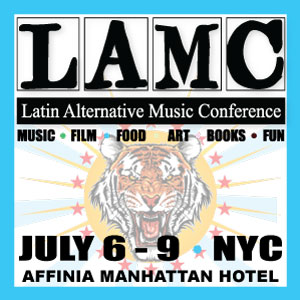
LAMC (Latin Alternative Music Conference), New York City July 6-9, 2016
http://www.latinalternative.com/
The LAMC (Latin Alternative Music Conference) is the only major conference celebrating and supporting genres of Latin music that are left of center and forging the way Latinos, especially young, bicultural-millennial Latinos in the U.S., define themselves. Hailed by The New York Times as the “Sundance of Latin music”, the LAMC is also the largest Latin music conference in the US. The 17th annual LAMC continues its focus of being dedicated to music, food, film, books, art and tech.
Posted by Elena del Valle on June 10, 2016

The Complete Migraine Health, Diet Guide and Cookbook
Photos: Robert Rose
When it comes to migraines science is still in the dark in many respects. Elizabeth Dares-Dobbie BSc, Lawrence Leung, MBBChir, and Susan Hannah believe migraine headaches are caused by histamines. They are convinced that lifestyle and understanding the triggers that cause migraines can lead to managing the chronic condition in order to prevent them, reduce their frequency or deal with them after they occur.
In The Complete Migraine Health, Diet Guide and Cookbook (Robert Rose, $24.95), the three share their ideas on the topic along with 150 recipes designed to minimize foods likely to trigger migraines. The 336-page book, published in 2013, was the first book for all three and required 15 months from idea to publication. It is divided into three main parts: Understanding Migraine, Cluster and Tension Headaches; Managing Primary Headaches; and Low-Histamine Diet Program.
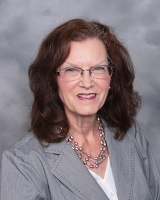
Elizabeth Dares-Dobbie
When asked by email via their publisher how their book stands out among the many titles on the subject Dares-Dobbie and Hannah replied: “Our Migraine book offers a complete package for the reader. Starting with a description of the symptoms and physiology of the 3 different headache types: migraine, tension, and cluster, moving on to the current guidelines health professionals follow when providing care for headaches. Next, we provide an in-depth description of the various drugs given for each scenario, the options for therapies provided both by traditional Western medicine or alternative medicine and end that section with lifestyle tips to reduce the impact of headaches. We describe the theory of how high histamines may cause headaches for some people, explaining exactly what happens in our bodies, and go on to provide a low histamine diet meal plan, followed by 150 recipes that work with the meal plan. Through the recipe section, we give tips on how to reduce histamines in family favourite recipes, such as serving hot sauces at the table rather than including them in a dish (for people whose histamine levels rise to cause a headache from hot sauce). Our book is easy to read and well organized.”
They set out to share with readers ways to identify the signs and symptoms for migraines, cluster, and tension headaches; learn about headache triggers; understand diagnosing tests; learn about treatments traditionally used by physicians and other healthcare providers, including the use of prescription medications, physiotherapy, and surgery; consider the benefits and risks of alternative treatments, such as acupuncture, body-mind medicine, and medicinal herbs; understand the role of nutrition and diet in the management of headaches; and adopt a healthy meal plan that focuses on enjoying antihistamine headache foods and eliminating foods that increase the risk of headache.
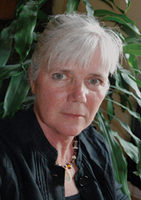
Susan Hannah
When asked why they believe there is a link between histamines and migraines, Dores-Dobbie and Hannah replied, “Long-standing research has shown a link between histamines and migraines. For decades, people with migraines have been warned away from foods high in histamines, such as red wine, old cheese, chocolate, and more. We relied on recent research to identify foods with different levels of histamine, including foods that have no histamine, and foods that help to reduce histamine, such as fresh and dried herbs added to recipes.”
Dares-Dobbie is a registered dietitian and nutrition consultant with expertise in diabetes, hypertension, cholesterol management, geriatric nutrition, gastroenterology, and food allergies. She runs a nutrition consulting business and practices in long term care in Kingston, Ontario.

Lawrence Leung
Hannah is a freelance writer, book designer, photographer and former research associate at the Department of Family Medicine at Queen’s University in Kingston, Ontario. She is keenly interested in lifestyle choices and diet as possible therapeutic strategies for improving health conditions and quality of life. Leung, associate professor in the Department of Family Medicine at Queen’s University, is a published medical research scientist and practicing physician of Western and traditional Chinese medicine.

Click to buy The Complete Migraine Health, Diet Guide and Cookbook
Comments:
Filed Under: Books
Posted by Elena del Valle on May 27, 2016

Geography of Genius
Photos: Simon & Schuster, Justin Tsucalas
Travel enthusiast and journalist Eric Weiner has become convinced there are clusters of geniuses around the world. The connection between our surroundings and our most innovative ideas, according to him, is notable in the present day and throughout history. In The Geography of Genius (Simon and Schuster, $26.95), a hardcover book published this year he explains what he has discovered during his travels. The book required four years of effort from idea to publication.
But, who is a genius? Weiner defines the term, “A genius is not simply someone with a high IQ, a know-it-all. A genius is a see-it-all. That is, someone who makes a conceptual leap and, in doing so, produces something useful or beautiful.”
When asked by email who might want to read his book he said, “Anyone interested in creativity and innovation. Or history, for that matter. Or just a good read. I pride myself on taking complex subjects, like genius, and simplifying them without over simplifying them.”
As to w hy he believes creativity begins at home, the author said,
“If creative genius is a function of place, as I argue it is, then there is no more important place than home. It is where we learn how to interact with the world. As parents, this is a big responsibility. Our children learn more about creativity by simply being a part of a family than they do from all of the ‘creativity exercises’ combined.”
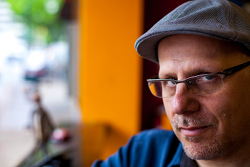
Eric Weiner, author, The Geography of Genius
As to what he means when he says creativity is a relationship that unfolds at the intersection of person and place, he said,
”
We tend to think of creativity as taking place in isolation. The myth of the lone genius is the best example of this, but it is just that, a myth, Creativity always takes place within a certain context. (and a certain time.) Freud’s radical theories about the human mind, for instance, could only have taken place in Vienna of 1900. The place, and time, were ripe for his ideas. Without this ripeness, even the most brilliant idea will die on the vine.”
For those who want to foster geniuses what are the essential elements?
Weiner believes t
hey are: Diversity, Discernment and Disorder.
“Places that are diverse–not only ethnically but also intellectually–are the most creative,” the author said. “They are like a rich and flourishing rain forest, as opposed to a desert. We need tolerance but we also need discernment. Not all ideas are good ones. Creative people don’t get attached to the bad ones. They are willing to ‘kill their darlings’ and move on. A certain degree of disorder, of chaos, even, is essential for a creative place and a creative person. Chaos is the bridge between old orders and new ones. Innovative people embrace it.”
The biggest challenge to writing the book was finding the right balance, between depth and accessibility, humor and seriousness, personal observations and universal truths, he explained.
“The greatest reward is when I receive an email from an appreciative reader who tells me that my book changed her life, in some way, large or small,” he said when asked what was the greatest reward to writing his book. “Ideally, I managed to get her to think about a familiar topic in a a fresh way, That’s what it’s all about.”
Weiner writes a regular column for BBC Travel. Prior to this book he wrote three books including, The Geography of Bliss, a The New York Times bestseller translated into 20 languages. Weiner is the recipient of the Borders Original Voices Award, and a finalist for the Barnes & Noble Discover Award. As a long-time foreign correspondent for National Public Radio, he reported from more than 30 nations, from Iraq to Indonesia, covering some of the major international events of recent times. His next book, still untitled, will be about practical philosophy.
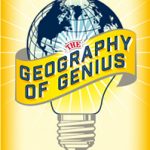
Click to buy The Geography of Genius
Comments:
Filed Under: Books
Posted by Elena del Valle on May 18, 2016
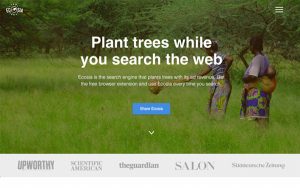
Click to enlarge
Photos: Ecosia
Ecosia, a Berlin, Germany based search engine, has between 2 and 2.5 million monthly active users who submit about 750,000 searches a day. The company’s search results and ads are powered by Bing. What makes the company special? In a world where it seems everyone is driven by greed alone, Ecosia donates 80 percent of its monthly profits ($50K to $80K each month) to planting trees in Brazil and Burkina Faso. Where the search engines keep track of users and their habits, Ecosia doesn’t.
“We don’t engage in any long-term saving or selling of personally identifiable user data,” said, Christian Kroll, chief executive officer and founder, Ecosia, by email when asked about the company’s privacy policies. “We believe that our users’ data and their privacy should be protected.”
Most of the search engine’s users are based in the Germany, Austria and Switzerland (DACH) region, where the company has captured 10 percent of non-Google users, followed by France and Spanish speaking countries, according to Kroll. Going forward he and his colleagues see the biggest potential in English speaking markets, and hope to eventually capture 2 percent of the global search market.
“We see Ecosia as a tool that allows users to capitalize on a daily habit (in this case searching the web) and do good without any further cost or effort on their side,” said Kroll. “We want to inspire others to come up with more business ideas like that and encourage them to use a share of their profits to support a good cause by proving that it’s actually possible.”
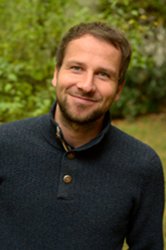
Christian Kroll, chief executive officer, Ecosia
“I decided to move to Berlin because it was closest to my family and offered (and still does) great opportunities for tech and green start-ups,” he said when asked about his choice of base. “The rent is very affordable, there are many creative and highly talented people from all over the world and people generally seem very open to topics like sustainability and shared economy.”
The entire Ecosia team is based in Berlin. There are 15 people, most of them full-time workers. Kroll founded the company in 2009 after traveling extensively. Despite several attempts it was not possible to speak with Kroll by phone in time for the publication of this note. Long term, the company aspires to plant 1 billion trees and end deforestation.
Posted by Elena del Valle on May 11, 2016
By Jay Gronlund,
President, The Pathfinder Group
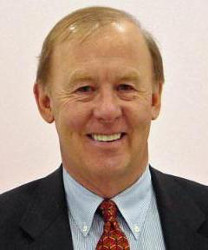
Jay Gronlund, president, The Pathfinder Group
The concept of brand equity (i.e. the perceived value of a brand) firmly arrived in the 1980’s when consumer goods companies reacted to a surge of cut throat discounting with a new search for a more sustainable way to boost sales and profits. The answer was to pour money into well-crafted brands, increase pricing, and highlight distinctive product features, all designed to create a more compelling brand image that would lead to greater loyalty. As David Aaker wrote in his book in 1991, “Managing Brand Equity”, aggressive marketing is needed to generate awareness, create a positive perception of relevant brand qualities, and grow loyalty, the three pillars of brand equity.
Click to read the entire Importance of Engaging Hispanic Millennials for Strong Brand Equity
Posted by Elena del Valle on May 6, 2016
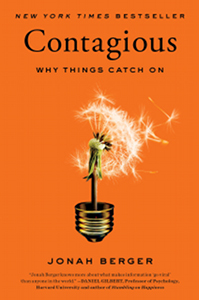
Contagious
Photos: Simon & Schuster, Deborah Feingold
Jonah Berger, Ph.D., who teaches marketing at the Wharton School at the University of Pennsylvania, is convinced popular topics share identifiable commonalities. After spending 15 years studying and researching how social influence works and how it drives products and ideas to catch on he thinks he has uncovered some of the reasons that people talk more about some products and ideas than others. In Contagious Why Things Catch On (Simon & Schuster, $14.69), a New York Times bestseller title published in 2013 and named Best Marketing Book of 2014 by the American Marketing Association, he outlines his theories on the topic.
He says that while people don’t pay attention to advertisements, they listen to their peers. In his book, which took more than 10 years from idea to publication, he outlines six basic principles he is convinced drive things to become popular. He describes them as Social Currency, Triggers, Emotion, Public, Practical Value, and Stories.
Following an introductory chapter, he dedicates a chapter to each of the principles in his 244-page hardcover book. He cites examples of how a steakhouse executive got buzz for his restaurant by adding a luxury sandwich to his menu, why anti-drug commercials may have increased drug use, and why 200 million consumers shared a video about a blender.
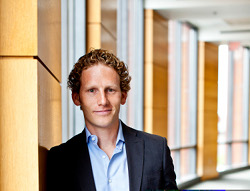
Johan Berger, author, Contagious
He wrote the book for “anyone who wants to get something to catch on. Might be a small business owner with a new service, a marketing manager launching a new product, or someone who wants to get others to change their behavior.”
When asked by email how he defines contagious for marketing purposes the marketing professor said it is “something that spreads from person to person via word of mouth.”
He shares surprising tidbits. For example, in the Leverage Game Mechanics section, he discusses how less than 10 percent of the estimated 10 trillion frequent flyer miles remain unused. In the Make People Feel Like Insiders section, he talks about the new found popularity of the McDonald’s McRib, which despite its name is made mostly of tripe, heart and stomach meat.
His second book, Invisible Influence: The Hidden Forces that Shape Behavior, on a similar topic is due out June 2016. One of the biggest challenges to writing and publishing the book, he said, was pulling all the research together.
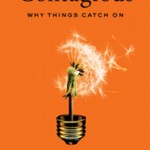
Click to buy Contagious
Comments:
Filed Under: Books
Posted by Elena del Valle on April 29, 2016
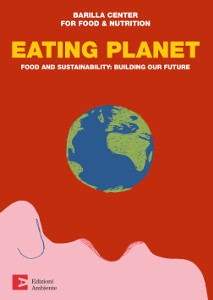
Eating Planet
Photos: Barilla Center for Food and Nutrition
Obesity costs the global economy $2 trillion annually. Contrasting that food waste costs another $2.6 trillion globally, according to the U.N. Food and Agriculture Organization (FAO). To put the issue of food into a human perspective 795 million people are believed to suffer from hunger or famine while at the same time 2.1 billion people are obese or overweight, according to the Barilla Center for Food & Nutrition Foundation in Italy. The organization and its members are among the high level thinkers across the globe concerned about the issues of food and nutrition.
In late February 2016, the Foundation launched the new edition of Eating Planet: Food and Sustainability: Building Our Future designed to provide “a comprehensive tool summarizing business perspectives on the global problems of food sustainability.” The first edition was published in 2012.
“These proposals can now be used as a starting point to truly correct the imbalances and distortions that are affecting the planet and the life of every one of us,” said Paulo Barilla, vice president, Barilla, in a promotional email about the book.




Contributing authors (left to right) Danielle Nierenberg, Barbara Buchner Matt Russell and Paolo De Castro
The report, to be published in several languages, focuses on the need for decision-making tools to guide research and innovation in the sector. The various authors suggest priority initiatives for decision makers and citizens, including many initiatives that have already been established by BCFN’s other action platforms such as the Milan Protocol and the Youth Manifesto.
The 301-page English language edition is divided into four main sections: Food For All, Food for Sustainable Growth, Food for Health, and Food for Culture. It is peppered with colorful photos and graphics.
Among the numerous contributing authors are Barbara Buchner, head of Climate Policy Initiative in Europe; Paolo De Castro, Italian politician, economist and agronomist; Carlo Petrini, president, Slow Food; Ricardo Uauy, professor, Public Health Nutrition at the Institute of Nutrition and Food Technology; Shimon Peres, President of Israel from 2007 to 2014; and Danielle Nierenberg, president, Food Tank.
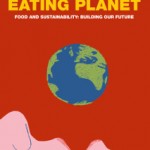
Click to buy Eating Planet – english edition
Comments:
Filed Under: Books
Posted by Elena del Valle on April 20, 2016

Unilever 100porcientotu campaign image
Photos: Unilever
To promote its Personal Care brands among Hispanics on social media Unilever staff launched #100PorCientoTu, a new bilingual campaign designed to promote “self-expression and individuality” in 2016. In developing the campaign executives relied on research from the company’s Consumer Marketing Insights (CMI) team.
Company representatives declined to identify details such as campaign elements or specific channels, except to say that it “will be supported by earned and paid media.” Planned components to date are the sponsorship of Nicky Jam’s The Fenix Tour concert in New York City and the Hispanicize conference in April.
“With #100PorCientoTu, Unilever is merging two Latino passion points, music and style, to inspire Latinos to be their best selves, always,” said Brian Critz, brand director, Multicultural for Unilever U.S. by email forwarded via the company’s public relations company. “At Unilever, we’ve adopted a total market approach to reaching Latino consumers, recognizing that there is a wide range of nuance when connecting with Latinos.”
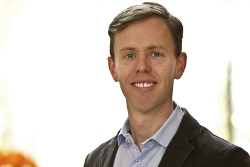
Brian Critz, brand director, Multicultural for Unilever U.S.
When asked about the target audience for the campaign he said, “With the #100PorCientoTu campaign, we want to celebrate the diversity and dynamism of the Latino community in the U.S., especially among millennials, whose identity is deeply tied to their culture, self-image and aspirations.”
Unilever hired a team of beauty and grooming influencers and experts like Denise Bidot, described as an international plus sized model, and Marcos “Reggae” Smith, described as a celebrity barber, and Leonardo Rocco, described as a celebrity stylist, to provide their views on beauty and grooming trends and tips at the campaign’s English language website, 100PorCientoTu.com. Some of the company’s Personal Care brands are Axe, Dove, Suave, Pond’s, TreSemme, Degree and Caress.
According to a recent company press release, Unilever is a leading supplier of Food, Refreshments, Home and Personal Care products with sales in more than 190 countries and reaching 2 billion consumers a day. In the United States, some of its brands are: Axe, Ben & Jerry’s, Breyers, Caress, Clear Scalp & Hair Therapy, Country Crock, Degree, Dove personal care products, Fruttare, Good Humor, Hellmann’s, and I Can’t Believe It’s Not Butter!; Unilever employs approximately 8,000 people in the United States; and in 2015, the company generated more than $8.5 billion in sales.
Posted by Elena del Valle on April 15, 2016
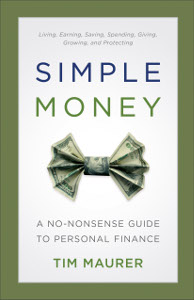
Simple Money
Photos: PR by the Book
Tim Maurer, director of personal finance, at Buckingham and the BAM Alliance, helps a team of 350 financial advisors nationally focus on the personal, non-numerical elements of financial advisory work such as behavioral finance, client interaction and communication. He dedicated a little over a year from idea to publication to Simple Money A No-Nonsense Guide to Personal Finance (BakerBooks, $15.99), a 285-page softcover book published this year, hoping, he says in the first chapter, for readers to find contentment, a richer life and a freer mind through the book.
When asked by email via his publisher how he defines simple money, he said: “Money management is complex because we are complex. Therefore, it is in better understanding ourselves that we are able to make even the most confounding financial decisions simple.”
The book is divided into 21 chapters and five parts: Planning for Life, Planning for Today, Planning for the Inevitable, Planning for the Unexpected and Planning for Action. He wrote the first two parts of the book, Planning for Life and Planning for Today, for all readers. The remainder he wrote for those curious about a particular topic like investing, life insurance, retirement planning or estate planning. He starts outlining four basic concepts: Personal finance is more personal than it is finance; We need to know why; Simple not simplistic; and Enough is “enough.”
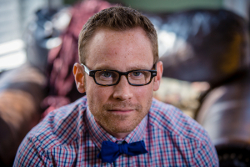
Tim Maurer, author, Simple Money
“For many years, I’ve said that ‘personal finance is more personal than it is finance,’ a statement that resonates anecdotally with most,” he said when asked why he wrote the book. “But my research more recently, especially in the field of behavioral finance and the science of motivation, has proven the statement to be scientific fact. This inspired me to synthesize the best of behavioral finance and use it as a lens through which to reexamine personal finance. The challenge, of course, was in making it ‘simple’ enough to be practical. But that’s always been my passion.”
The biggest challenge he faced writing the book was that, “Although it’s not the first time I’ve shared it, I give the most detailed rendition to date of the story of my near-death car accident that forever shaped my view of life, work and money,” he said. “It’s an important story, and it’s good for me to tell it, but it’s not necessarily easy.”
Each chapter begins with an explanation of what makes the topic relevant to the reader and ends with summary points. In the book, he says that “One of the ways we can make financial decisions simple is to genuinely understand what motivates us.” He goes on to say that although motivation is at the root of what we want too often it remains separate from our financial planning.
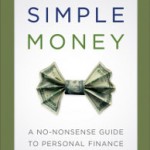
Click to buy Simple Money
Comments:
Filed Under: Books
Posted by Elena del Valle on April 6, 2016
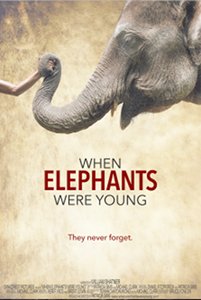
When Elephants Were Young
Photos, video: canazwest pictures
Canadian filmmaker Patricia Sims cares about endangered Asian elephants, a great deal. She and her collaborators dedicated five years to filming elephants and elephant handlers in Thailand at the end of which they produced When Elephants Were Young, an 86-minute documentary narrated by actor William Shatner. The film, in English and Thai with subtitles, will show at 5:30 p.m. April 8 at the Cinemark Palace, 3200 Airport Road, Boca Raton, and 12 noon April 13 at the Parisian 17, 545 Hibiscus St, West Palm Beach, as part of the Palm Beach International Film Festival in Palm Beach County, Florida.Scroll down to watch a trailer of the film.
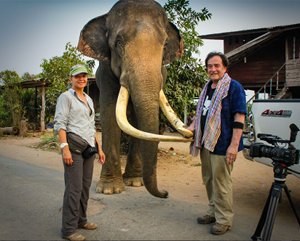
Patricia Sims and Michael Clark dedicated five years to the project
The film follows Wok, a young man, and Nong Mai, his young captive elephant, in their struggle to make a living begging on the streets of Bangkok, Thailand. When the opportunity arises to release Nong Mai to the forest Wok must decide, torn between his affection for the elephant who is also his only source of income, what is best. Can an elephant who has only known a life of captivity survive in the wild? The film zooms into the daily lives of its protagonists, examining the paradoxes of elephants in captivity.
According to Sims, When Elephants Were Young will appear in theaters across North America on World Elephant Day, August 12, 2016. Theater listings should be available in June. Around that same time it should become available globally on various video on demand platforms such as iTunes and Amazon. In Canada, it is slated for broadcast on the CBC Documentary Channel in fall 2016.
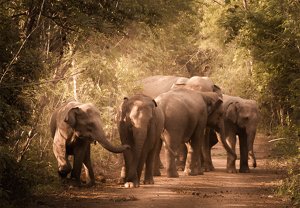
Asian elephants in Thailand from the film When Elephants Were Young
“There were many, many challenges, as is often the case with independent documentary filmmaking!” Sims said by email when asked about the biggest challenge she faced in the making of the film. “For sure, funding was a big challenge, and continues to be so even for this release stage of the film. There are many costs required to release our film, or any film, to the public. Often people are surprised to learn what is involved in the distribution stage for independent film, and what it takes to get a film out to the world.”
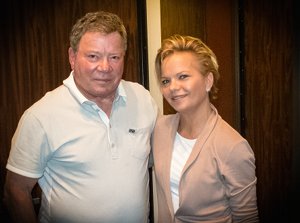
Patricia Sims, director, and William Shatner, narrator, When Elephants Were Young
The film’s budget was under one million dollars. Sims relied on “a combination of self-funding, crowd-funding, and private funding and a lot of in-kind support from many generous people who wanted to help us tell this story, and support the elephant cause.”
When asked about the rewards and surprises along the filmmaking journey, she replied, “We’ve had many amazing surprises and rewards with this film! Unfortunately, I can’t mention what they are here because it will ruin the ending of the film’s story. People will have to watch the film to see what our biggest surprises and rewards have been!”
Sims was director and producer and she co-wrote the documentary with Michael Clark. She has a passion for large-brained megafauna such as dolphins, primates, and elephants. She and the Elephant Reintroduction Foundation launched World Elephant Day on August 12, 2012.
As technology activist, cinematographer, and editor, Clark has employed his talents to portray the interconnectivity of life on this planet. He has won international awards for his work and his credits range from documentaries to episodic television, commercial and feature film productions. He seeks “to use digital and traditional media to inspire awareness, awe, and action for a mirthful, sustainable future.”







































